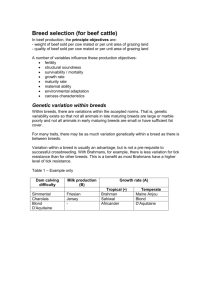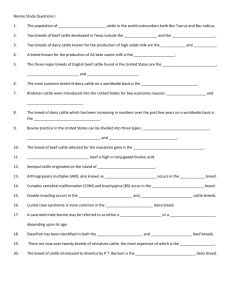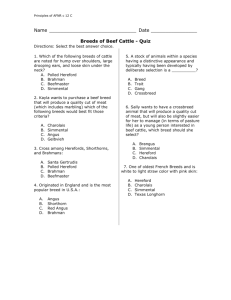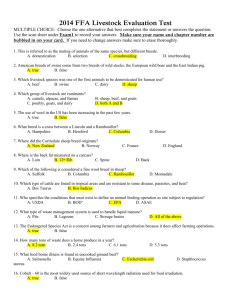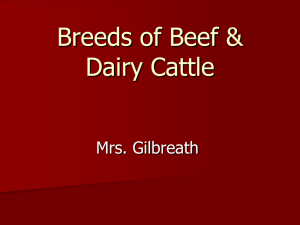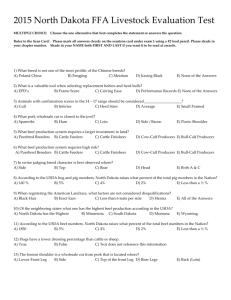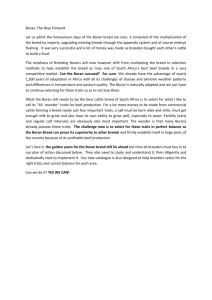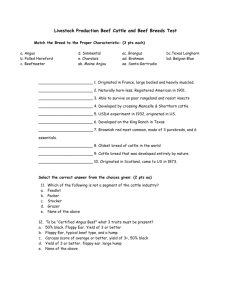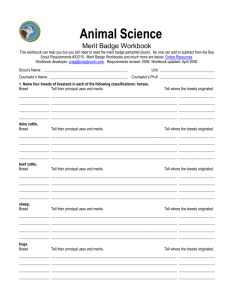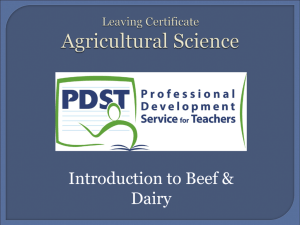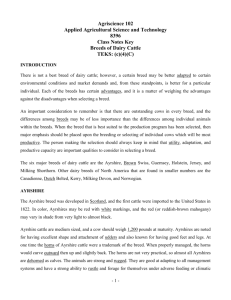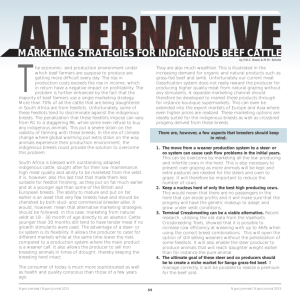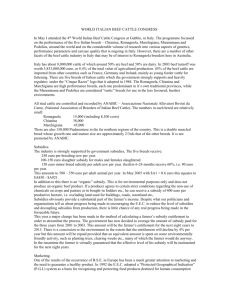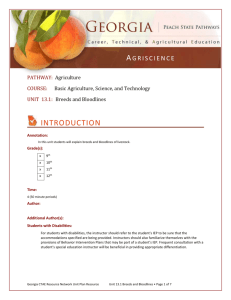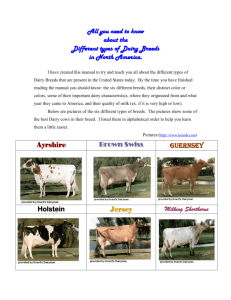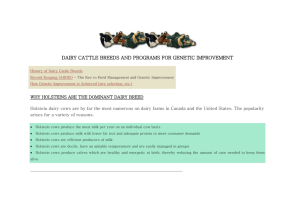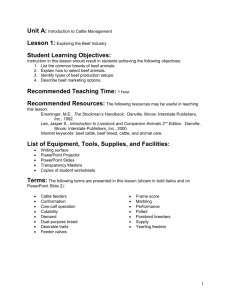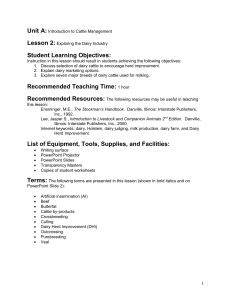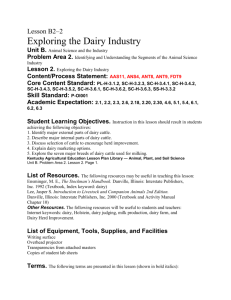Designer Cows
advertisement
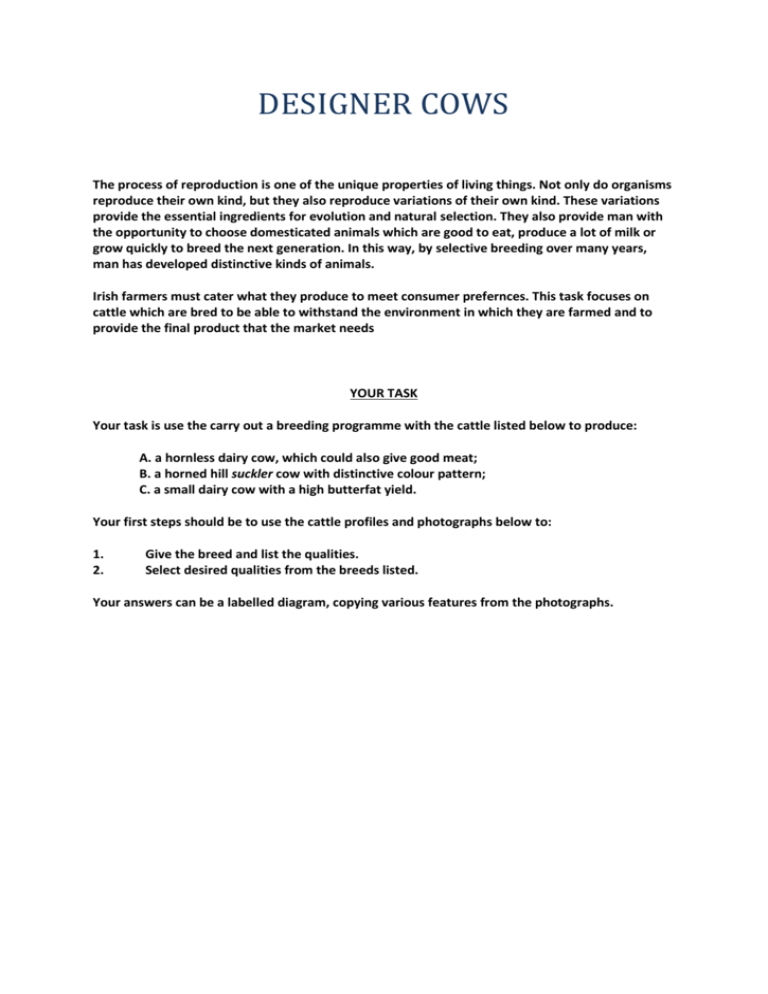
DESIGNER COWS The process of reproduction is one of the unique properties of living things. Not only do organisms reproduce their own kind, but they also reproduce variations of their own kind. These variations provide the essential ingredients for evolution and natural selection. They also provide man with the opportunity to choose domesticated animals which are good to eat, produce a lot of milk or grow quickly to breed the next generation. In this way, by selective breeding over many years, man has developed distinctive kinds of animals. Irish farmers must cater what they produce to meet consumer prefernces. This task focuses on cattle which are bred to be able to withstand the environment in which they are farmed and to provide the final product that the market needs YOUR TASK Your task is use the carry out a breeding programme with the cattle listed below to produce: A. a hornless dairy cow, which could also give good meat; B. a horned hill suckler cow with distinctive colour pattern; C. a small dairy cow with a high butterfat yield. Your first steps should be to use the cattle profiles and photographs below to: 1. 2. Give the breed and list the qualities. Select desired qualities from the breeds listed. Your answers can be a labelled diagram, copying various features from the photographs. CATTLE PROFILES ABERDEEN ANGUS The Polled characteristic is dominant in progeny. Medium growth rate. Aberdeen Angus bulls are often used as sires for breeds which have difficulty in calving. BELGIAN BLUE Large animal, double muscling, imported breed. CHAROLAIS One of the largest breeds with a rapid growth rate and lean muscle development on back and hind quarters. One problem with this breed is the increase in calving difficulty for dairy and suckler cows when a Charolais bull is used. FRIESIAN Holstein Friesians provide a high milk yield and are particularly suited to more intensive systems of dairy production. They are angular in shape. Pure Friesians are thicker set and respond well to extensive systems. Friesians produce calves that are better shaped for beef production and their cross breeds produce good beef. These breeds account for more milk and beef in this country than any other breed in Ireland. BELTED GALLOWAY Very hardy breed with thick coats and are polled. HIGHLAND Very slow growing, their hardiness allows them to survive on poor herbage in extreme conditions. Horned, long coat. JERSEY The smallest of the major dairy breeds, produces milk of a high fat content and is capable of high stocking rates. Pure breds produce poor beef cattle. RED POLL Dairy breed, large digestion which enables greater milk production, large udder, poll characteristic dominant and transmitted to progeny. Pure and cross bred cattle are useful for beef herds. WHITE PARK Active, short legs, muscle on back and hind quarters, hardy and horned Dominant colour pattern. HEREFORD Contains no imported bloodlines. Good converters of poor quality forage, adaptable to poor, extreme climate conditions. Very high quality beef. Horned. Dominant colour pattern, i.e. red brown with white face. Smaller than many of today's modern beef breeds. Homework Consider and research evidence for the following statements 1. Through natural selection, animals most suited to local conditions are most likely to breed and produce the next generation. 2. Artificial selection (by man) has developed animals suited to a man-made environment, e.g. controlled environment housing and concentrated feeds. 3. There are advantages in farming native breeds, compared with imported breeds - for example with beef cattle, Herefordas against Charolais.
